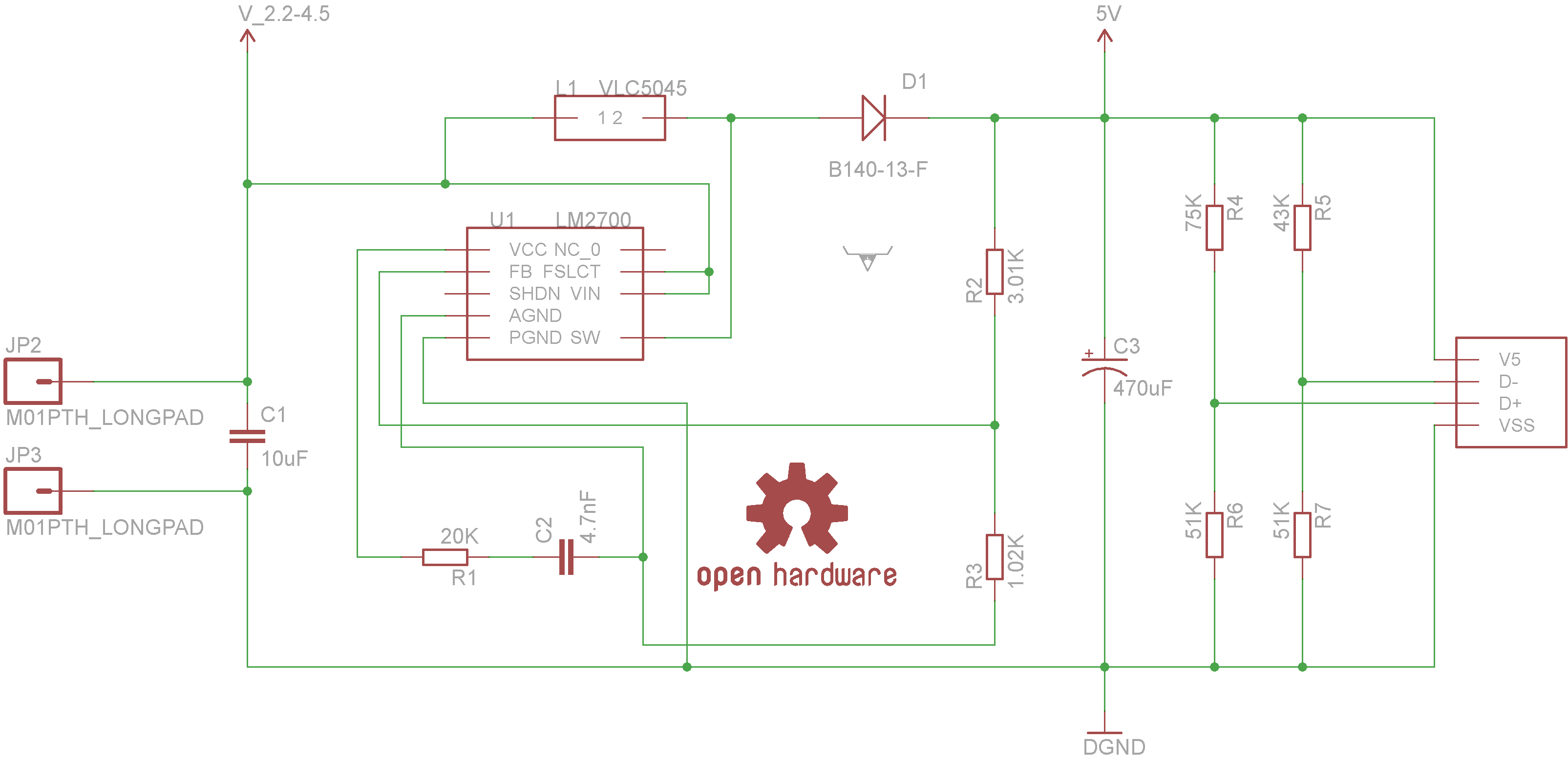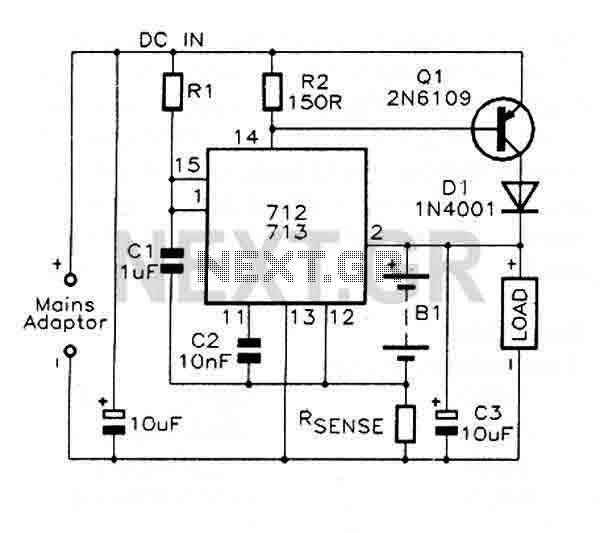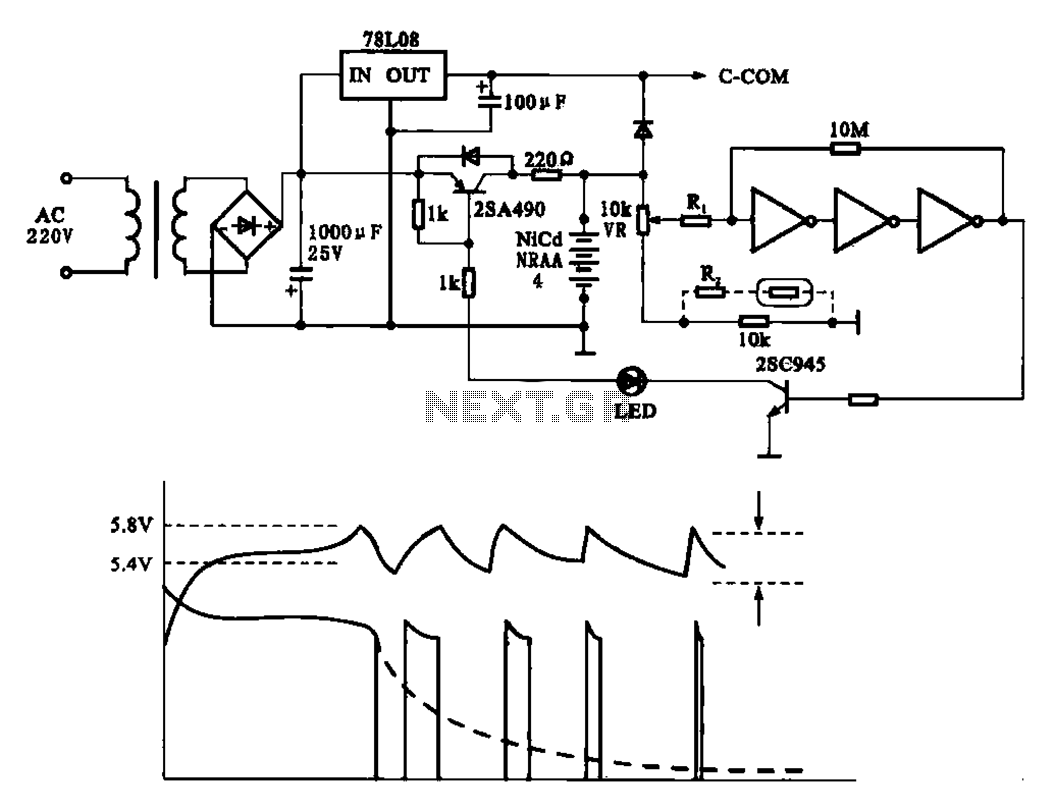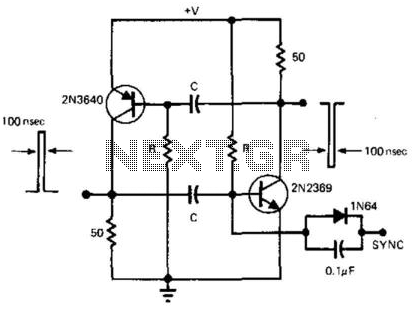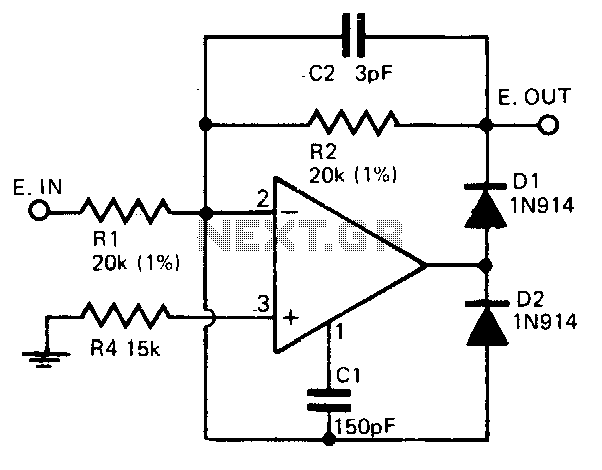
Self-powered Fast Battery-Testers
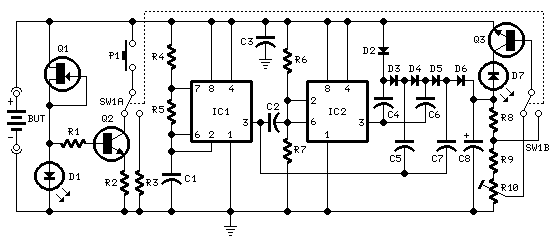
This circuit performs a rapid battery test without requiring a power supply or costly moving-coil voltmeters. It features two ranges: when SW1 is configured as depicted in the circuit diagram, the device can test batteries ranging from 3V to 15V. When SW1 is switched to the alternate position, it is capable of testing only 1.5V cells. FET Q1 functions as a constant current generator, biasing the LED. Diode D1 and the base of Q2 work together such that D1 illuminates with a consistent intensity, regardless of the battery voltage between 3V and 15V. When P1 is closed, Q2 applies a constant current load of approximately 120mA to the battery. IC1 serves as a square wave generator oscillating at about 3KHz, while IC2 acts as an inverter, driving diodes D2-D6 and capacitors C4-C7 in an anti-phase manner to achieve voltage multiplication. Capacitor C8 is charged by this elevated voltage, and resistors R8-R10 form a voltage divider that biases the base of Q3. When P1 is open, a minimal load is placed on the battery under test, and the base of Q3 is biased to keep LED D7 off. Closing P1 applies a 120mA load to the battery under test. If the battery is not fully charged, its output voltage begins to drop; when this voltage falls 0.6V below the nominal battery voltage, the emitter of Q3 becomes more negative than the base, causing the transistor to become hard biased and LED D7 to illuminate. This condition lasts only a few seconds, corresponding to the time required for C8 to discharge to the new voltage level, which is proportional to the loaded battery voltage. If the battery under test is adequately charged, its output voltage does not drop under the 120mA load, keeping LED D7 off. For testing 1.5V batteries, the circuit formed by Q1, Q2, D1, R1, and R2 does not function effectively at this supply voltage; therefore, a 150mA load current is applied to the battery using a 10 Ohm resistor R3 after switching SW1A. The biasing of Q3 is also adjusted via SW1B.
This battery testing circuit is designed for efficiency and accuracy, enabling quick assessments of battery health without the need for external power sources or expensive equipment. The dual-range functionality allows for versatility in testing various battery types, ensuring that both 3V to 15V batteries and 1.5V cells can be evaluated effectively.
The core of the circuit relies on a constant current output, provided by FET Q1, which ensures that the LED's brightness remains stable across a range of input voltages. This feature is critical for accurate visual feedback during testing. The use of a square wave generator (IC1) and an inverter (IC2) enhances the circuit's ability to multiply voltage, allowing for the effective operation of the load applied to the battery under test.
The design includes protective measures to prevent damage to the circuit from excessive battery discharge. The feedback mechanism involving Q3 and LED D7 serves as a visual indicator of battery performance, providing immediate feedback on the battery's ability to maintain voltage under load. The timing of the feedback, governed by the discharge characteristics of capacitor C8, allows for a brief but informative glimpse into the battery's condition.
In summary, this circuit is a practical solution for rapid battery testing, combining simplicity with effective functionality. It is particularly useful in environments where quick battery assessments are necessary, such as in automotive or portable electronic applications. Its design reflects a balance between performance, cost-effectiveness, and user-friendly operation.This circuit runs a fast battery test without the need of power supply or expensive moving-coil voltmeters. It has two ranges: when SW1 is set as shown in the circuit diagram, the device can test 3V to 15V batteries.
When SW1 is switched to the other position, only 1. 5V cells can be tested. FET Q1 provides a constant current generator biasing LED D1 and Q2 Base. In this manner D1 illuminates at a constant intensity, independent of battery voltage from 3 to 15V and Q2 (when P1 is closed) applies a constant current load of about 120mA to the battery. IC1 is a square wave generator oscillating at about 3KHz. IC2 acts as an inverter and drives, together with IC1 but in anti-phase, Diodes D2-D6 and Capacitors C4-C7, obtaining a voltage multiplication.
C8 is charged by this raised voltage and R8-R10 form a voltage divider biasing the Base of Q3. When P1 is open, a very light load is applied to the battery under test and Q3 Base is biased in order to maintain LED D7 in the off state. Closing P1, a 120mA load is applied to the battery under test. If the battery is not fully charged, its output voltage starts reducing: when this voltage falls 0. 6V below the battery nominal voltage, Q3 Emitter becomes more negative than the Base, transistor is hard biased and D7 illuminates.
Obviously, this state of affairs lasts a few seconds: the time spent by C8 to reduce its initial voltage to the new one, proportional to the voltage of the loaded battery. If the battery under test is in a good charging state, its output voltage did not fall under a 120mA loading current, so LED D7 stays off.
When testing 1. 5V batteries, the circuit formed by Q1, Q2, D1, R1 & R2 doesn`t work well at this supply voltage, so a 150mA load current is applied to the BUT by means of the 10 Ohm resistor R3 after switching SW1A. Q3 bias is also changed via SW1B. 🔗 External reference
This battery testing circuit is designed for efficiency and accuracy, enabling quick assessments of battery health without the need for external power sources or expensive equipment. The dual-range functionality allows for versatility in testing various battery types, ensuring that both 3V to 15V batteries and 1.5V cells can be evaluated effectively.
The core of the circuit relies on a constant current output, provided by FET Q1, which ensures that the LED's brightness remains stable across a range of input voltages. This feature is critical for accurate visual feedback during testing. The use of a square wave generator (IC1) and an inverter (IC2) enhances the circuit's ability to multiply voltage, allowing for the effective operation of the load applied to the battery under test.
The design includes protective measures to prevent damage to the circuit from excessive battery discharge. The feedback mechanism involving Q3 and LED D7 serves as a visual indicator of battery performance, providing immediate feedback on the battery's ability to maintain voltage under load. The timing of the feedback, governed by the discharge characteristics of capacitor C8, allows for a brief but informative glimpse into the battery's condition.
In summary, this circuit is a practical solution for rapid battery testing, combining simplicity with effective functionality. It is particularly useful in environments where quick battery assessments are necessary, such as in automotive or portable electronic applications. Its design reflects a balance between performance, cost-effectiveness, and user-friendly operation.This circuit runs a fast battery test without the need of power supply or expensive moving-coil voltmeters. It has two ranges: when SW1 is set as shown in the circuit diagram, the device can test 3V to 15V batteries.
When SW1 is switched to the other position, only 1. 5V cells can be tested. FET Q1 provides a constant current generator biasing LED D1 and Q2 Base. In this manner D1 illuminates at a constant intensity, independent of battery voltage from 3 to 15V and Q2 (when P1 is closed) applies a constant current load of about 120mA to the battery. IC1 is a square wave generator oscillating at about 3KHz. IC2 acts as an inverter and drives, together with IC1 but in anti-phase, Diodes D2-D6 and Capacitors C4-C7, obtaining a voltage multiplication.
C8 is charged by this raised voltage and R8-R10 form a voltage divider biasing the Base of Q3. When P1 is open, a very light load is applied to the battery under test and Q3 Base is biased in order to maintain LED D7 in the off state. Closing P1, a 120mA load is applied to the battery under test. If the battery is not fully charged, its output voltage starts reducing: when this voltage falls 0. 6V below the battery nominal voltage, Q3 Emitter becomes more negative than the Base, transistor is hard biased and D7 illuminates.
Obviously, this state of affairs lasts a few seconds: the time spent by C8 to reduce its initial voltage to the new one, proportional to the voltage of the loaded battery. If the battery under test is in a good charging state, its output voltage did not fall under a 120mA loading current, so LED D7 stays off.
When testing 1. 5V batteries, the circuit formed by Q1, Q2, D1, R1 & R2 doesn`t work well at this supply voltage, so a 150mA load current is applied to the BUT by means of the 10 Ohm resistor R3 after switching SW1A. Q3 bias is also changed via SW1B. 🔗 External reference

